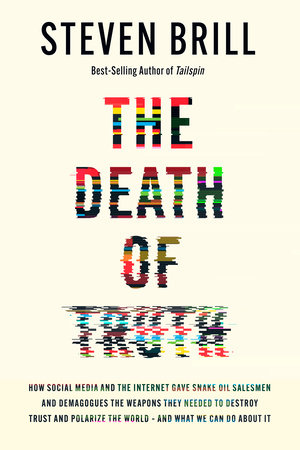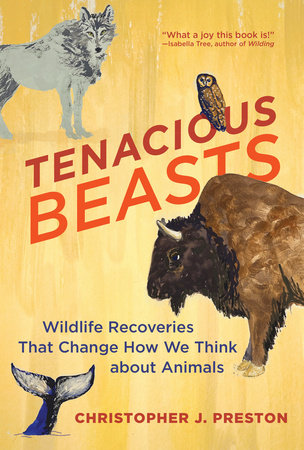An engrossing look at the perniciousness of fake news.

The Death of Truth: How Social Media and the Internet Gave Snake Oil Salesmen and Demagogues the Weapons They Needed to Destroy Trust and Polarize the World — and What We Can Do About It is an entire education. In this dense but enthralling exposé of today’s online-information landscape, veteran journalist and media watchdog Steven Brill presents readers with everything we need to understand just how cautious we should be when searching the muck and mire of the internet. According to the author:
- There is an enormous amount of misinformation and disinformation online. It’s a bit of a “cesspool.”
- It’s often difficult for users to distinguish between “snake oil salesmen” and journalists.
- Much of the bad information is generated by democracy-destabilizing entities, both domestic and foreign.
- Too many people fall for mis- and disinformation, and the consequences are colossal.
- To make matters worse, AI mines the online text-pit — including disreputable sites — for the bogus information that it then spits back out to users who trust it.
- Sadly, mis- and disinformation are big, big business. False and dangerous sites are monetized by algorithmically driven advertising practices in much the same way reputable sites are.
- Current laws are outdated and almost entirely inadequate in regulating it.
- Private big-tech companies have it in their power to do more to regulate mis- and disinformation but are disincentivized by profit and their own selfish interests. (My words.)
- Many federal policymakers are also disincentivized to make meaningful change by the political gain they perceive in the status quo.
There’s more, but I’ll leave it for you to discover. Just know: The scope and detail of Brill’s work are mind-blowing, and the information conveyed is extremely important.
Much of it is history: the history of the internet, attempts to regulate it, attempts to block attempts to regulate it, technological developments that changed the playing field, and trends in truth and deception. As he tells it all, Brill provides as clear an answer as possible to the question: How on earth did things get to be this way? As one progresses through the book, one gets the sense that very few people other than Brill could’ve written it. As co-founding CEO of NewsGuard, which rates websites based on nine commonsense but crucial practices, he’s been on the frontlines in an extremely engaged way.
He writes from the position of a true expert, but he does so in long sentences that can be hard to follow. This is especially true early on in the book. But the prose lightens up a few chapters in, and readers should stick with it. I was a bit confused about Brill’s exact audience, but that, too, gets clearer toward the end.
In his “Resurrecting Truth: What You Can Do” chapter, for example, Brill “reverse engineers” the problems he’s just named in order to point to solutions. Few are doable for the average citizen, however. Most are systemic. But communications experts, their students, media reformers, fact checkers, rhetoricians, information specialists, journalists, media lawyers, truth-in-media activists, and educated, engaged others will nevertheless regard The Death of Truth as necessary reading. It’s a significant book bound to be recognized as such.
Someone will have to write a different book, probably based on this one, to appeal to a wider public readership, though. There are anecdotes and dialogue in The Death of Truth that break up the exposition. A more broadly accessible version would’ve used framing and contextualizing devices like section headings to offer the education in chunks. It might also have focused the “What You Can Do” section on more achievable actions like critical reading.
The book could also have stood to be more culturally sensitive. Though Brill does mention the connection between online misinformation and hate-group empowerment, minoritized readers might struggle with some of the unacknowledged bias of the book. For instance, the chapter “America’s Shameful Export” sets itself up to be a discussion of the international misinformation situation. The author says, “Let’s do a brief world tour” of the current landscape. He then looks at a reasonable number of countries, but none are African or Latin American, which is typical of older writing that presents as “global.”
For a moment, I thought the problem with untruth must be confined to European countries and China. Then I googled “internet disinformation” alongside the first 10 African, Caribbean, and Latin American countries that popped into my head. All have the same serious problems Brill is discussing. An editor at Knopf could’ve nudged him to at least mention them or name them as beyond the scope of his discussion.
Still, shortcomings like this, even though they’re racialized, were more like pinpricks than major stumbling blocks. Also, they struck me more as book-editing problems than book-writing ones. Better editing could have nipped the bias in the bud. And culturally competent copyediting could have, among other things, reshaped “the good old days of journalism” trope. There’s a little too much of it here.
That trope is present in every other book or article I’ve read on this topic: The overly nostalgic premise is that mainstream media used to be true (instead of more true, more reputably sourced, more often created through empirical practices, and better beholden to the ethics of journalism). The fact is that the good old days of journalism were a mixed bag for many of us Black and brown folks, to say the least. (Please see my recent column on this, if the topic interests you.)
With tweaks here and there, the writing could have conveyed the sense that journalism was never perfect. What Brill exalts frequently, what he’s advocating with every fiber of his being on every platform imaginable, are the methods that credible journalists follow and the principles that once guided the profession. But the book’s title, its key points, and its final line overly exalt something that was deeply flawed. The book’s ending, “Those who have been lured to the fringes will…start to believe in truth again,” solidifies the impression that the past was better than it was.
A culturally competent editor could’ve made this clear with minimal intrusion into the author’s voice. Since that’s no longer possible, I can only hope any future editions acknowledge sociocentricity and the near-erasure of the non-white Other as themselves forms of disinformation.
Despite such shortcomings, The Death of Truth is a monumental achievement and a must-read for anyone with a disciplined attention span and the yearning to know what on earth is happening with the internet. The importance of this book cannot be overstated, and Brill is to be praised, even thanked, for this undertaking. The Death of Truth moves his crusade forward in vital ways.
Sarah Trembath is an Eagles fan from the suburbs of Philadelphia who currently lives in Baltimore with her family. She holds a master’s degree in African American literature and a doctorate in Education Policy and Leadership. She is also a writer on faculty at American University. She reviews books for the Independent, has written extensively for other publications, and, in 2019, was the recipient of the American Studies Association’s Gloria Anzaldúa Award for independent scholars for her social-justice writing and teaching. Her collection of essays is currently in press at Lazuli Literary Group.

.png)